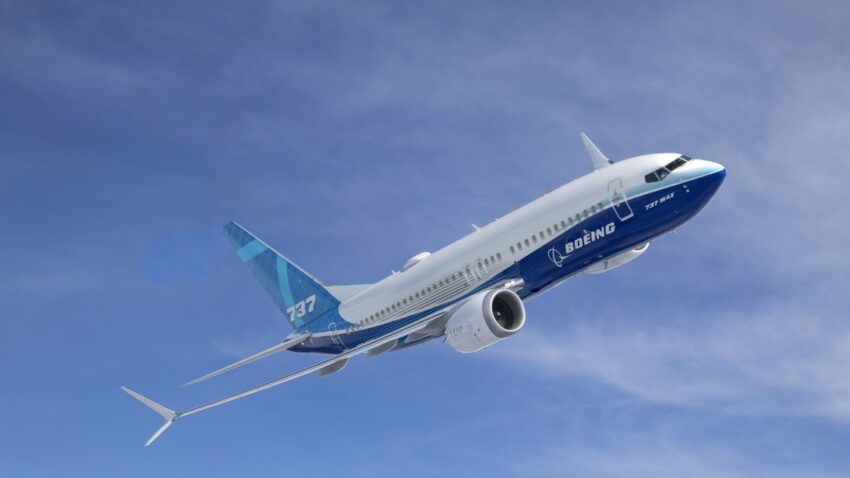
something from space may have just struck A United Airlines flight experienced a mid-air incident when an object struck its windscreen while flying over Utah, prompting an investigation by the National Transportation Safety Board (NTSB).
something from space may have just struck
Incident Overview
On Thursday, during a scheduled flight from Denver to Los Angeles, a United Airlines Boeing 737 MAX encountered an unexpected event that has raised significant concerns. The aircraft was cruising at altitude when an unidentified object struck the windscreen, resulting in a noticeable crack. The incident has drawn attention not only due to the potential safety implications but also because of the mysterious nature of the object involved.
NTSB Investigation Initiated
In response to the incident, the NTSB confirmed on Sunday that it is actively investigating the circumstances surrounding the strike. The agency announced via social media platform X (formerly Twitter) that it is in the process of gathering critical data, including:
- Radar information
- Weather conditions at the time of the incident
- Flight recorder data
Additionally, the NTSB indicated that the damaged windscreen would be sent to its laboratories for thorough examination. This step is crucial in determining the nature of the object that struck the aircraft and assessing any potential risks to aviation safety.
Details of the Incident
According to reports, the flight was operating normally when the incident occurred. Passengers and crew were likely unaware of the severity of the situation until the damage was visually confirmed. Images circulating on social media depict the cracked windscreen, highlighting the significant impact it sustained. Furthermore, some images show a pilot’s arm with multiple cuts, presumably caused by small shards of glass resulting from the windscreen’s damage.
Potential Causes of the Object
The nature of the object that struck the aircraft remains unclear. Speculation ranges from a bird strike to debris from space. The latter possibility has particularly intrigued experts, given the increasing amount of space debris orbiting the Earth. As satellite launches become more frequent, the risk of collision with such debris has grown, leading to heightened scrutiny of airspace safety.
In recent years, there have been several documented cases of aircraft encountering objects in flight, including:
- Bird strikes, which are common and can cause significant damage to aircraft
- Drone incidents, which have raised alarms due to their increasing prevalence near airports
- Space debris, which poses a lesser-known but growing risk
Each of these potential causes presents unique challenges for investigators and underscores the need for robust safety protocols in aviation.
Stakeholder Reactions
The incident has elicited reactions from various stakeholders in the aviation industry. United Airlines, as the operator of the affected flight, has expressed its commitment to cooperating fully with the NTSB investigation. The airline has emphasized its priority on passenger safety and the importance of understanding the circumstances surrounding the incident.
Industry experts have also weighed in on the implications of such incidents. Aviation safety analyst John Smith noted, “Any strike to an aircraft’s windscreen is a serious matter. The NTSB’s thorough investigation will be critical in determining the cause and ensuring that similar incidents are prevented in the future.” His comments reflect a broader concern within the aviation community regarding the safety of commercial flights.
Public Concerns and Safety Protocols
Public reaction to the incident has been mixed, with some expressing concern over the safety of air travel. Social media platforms have been abuzz with discussions about the potential dangers posed by unidentified objects in the sky. Passengers often rely on airlines and regulatory bodies to maintain high safety standards, and incidents like this can lead to increased anxiety about flying.
In light of this incident, it is essential to consider the existing safety protocols in place for commercial aviation. Airlines and regulatory agencies have established comprehensive measures to mitigate risks associated with various airborne threats. These measures include:
- Regular maintenance and inspections of aircraft
- Training for pilots and crew on how to respond to in-flight emergencies
- Collaboration with meteorological agencies to monitor weather conditions
- Implementation of strict regulations regarding drone usage near airports
Despite these precautions, the unpredictable nature of airborne objects presents an ongoing challenge for the aviation industry. The NTSB’s investigation will likely lead to recommendations aimed at enhancing safety measures further.
Historical Context of Airborne Incidents
Incidents involving objects striking aircraft are not new. Over the years, there have been numerous documented cases that highlight the challenges faced by the aviation industry. For instance, bird strikes have been a persistent issue, with thousands of incidents reported annually in the United States alone. According to the Federal Aviation Administration (FAA), bird strikes can lead to significant damage, particularly to engines and windshields.
In addition to bird strikes, the rise of drone usage has introduced a new variable into the equation. Drones have been involved in several near-miss incidents with commercial aircraft, prompting regulatory bodies to implement stricter guidelines for drone operators. The FAA has been proactive in addressing these concerns, but the rapid evolution of drone technology continues to pose challenges.
The Growing Concern of Space Debris
Space debris has emerged as a pressing concern in recent years. As the number of satellites and other objects in orbit increases, so does the risk of collision. While the majority of space debris remains in orbit, some fragments can re-enter the Earth’s atmosphere and pose a risk to aircraft flying at cruising altitudes. The potential for such incidents has led to calls for greater international cooperation in managing space debris and ensuring the safety of both air and space travel.
Conclusion
The incident involving the United Airlines flight over Utah serves as a reminder of the complexities and challenges faced by the aviation industry. As the NTSB investigates the circumstances surrounding the windscreen strike, the findings will likely have implications for safety protocols and regulations. The aviation community remains vigilant in its efforts to ensure the safety of air travel, but incidents like this highlight the need for ongoing vigilance and adaptation to emerging threats.
As investigations continue, stakeholders will be closely monitoring developments to understand the nature of the object that struck the aircraft and to implement any necessary changes to enhance safety measures in the future.
Source: Original report
Was this helpful?
Last Modified: October 20, 2025 at 4:35 am
3 views














